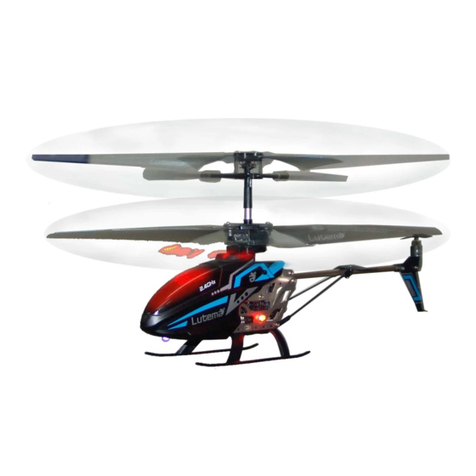62
Troubleshooting
Owners Responsibilities
1. Please play responsibly. As the owner of this helicopter, you have the responsibility to make
sure that you do not cause injury to any person or property using this device.
2. When you adjust, assemble, and fly the helicopter, you must strictly operate it according to the
instructions in this manual. Make sure your fingers and other parts of the body are away from
the moving parts on the helicopter.
3. The user of this helicopter is completely responsible for the correct operation and usage of this
product. The manufacturer and dealer of this product accept no liability for injury of any person,
or damage to this product due to incorrect usage and operation.
4. Do NOT allow children under 14 years of age to operate this product.
1. The control distance and elevation will be limited when the helicopter is not fully charged.
2. Be sure to repair the helicopter if the unit is damaged before attempting to fly again. Do NOT fly the
helicopter if the rotor or blades are damaged in order to prevent injury.
3. Remove all batteries from the transmitter if you plan to not fly the helicopter for an extended
period of time. This will prevent battery leakage and damage to the product.
4. Do NOT drop the helicopter from high altitudes, or cause serious impacts as these actions
will damage the helicopter and shorten the usage time.
PROBLEM
Remote control
does not power on
The indicator
of transmitter
does not turn on
Can not control
the unit
PROBABLE CAUSE SOLUTION
Batteries are not installed properly
on the remote control
Batteries are drained or are not
installed properly
Helicopter is not receiving the
transmitters’ signal
Rotor speed is too slow
Helicopter is not fully charged Fully charge your helicopter
Pushing up the left stick
(throttle stick)
Infrared transmitter is not pointed
to the unit or there is an obstruction
in the way of the transmitter
Clear all obstructions and/or point
the transmitter to the helicopter
Install new batteries
Make sure the batteries
polarity is correct
Helicopter is
not flying
high enough

























